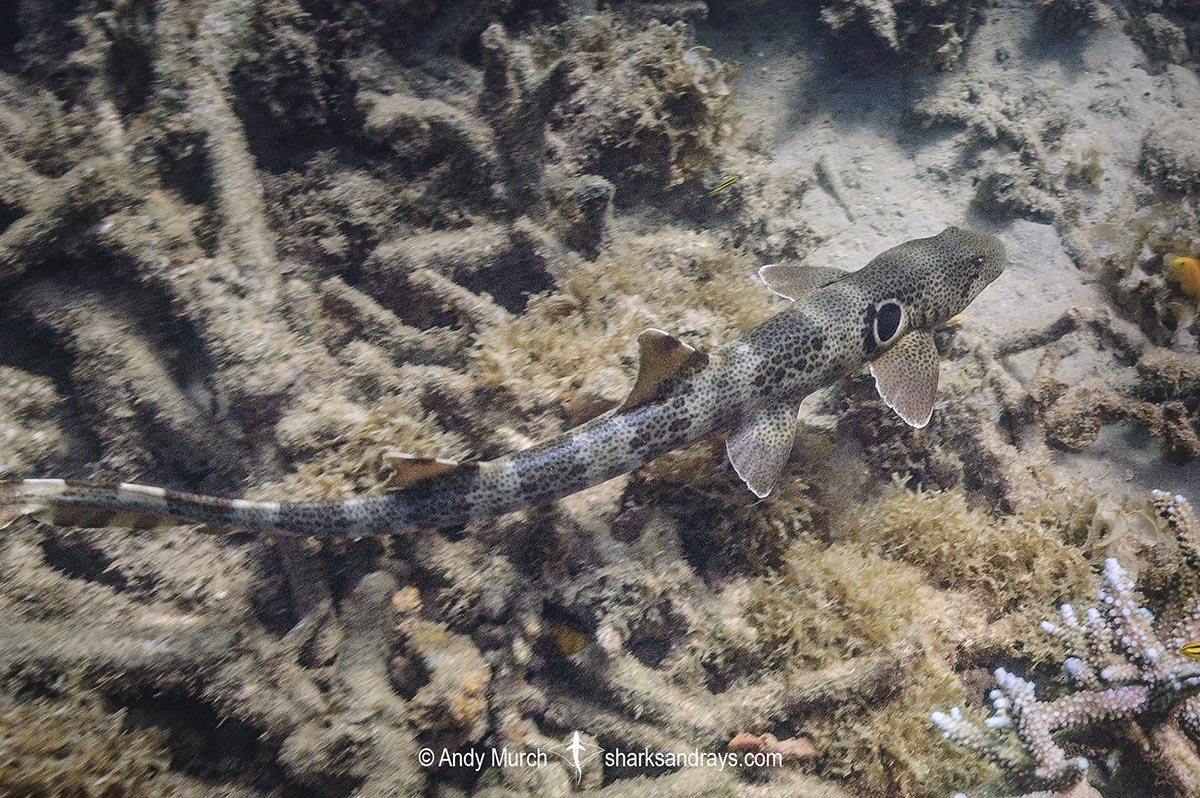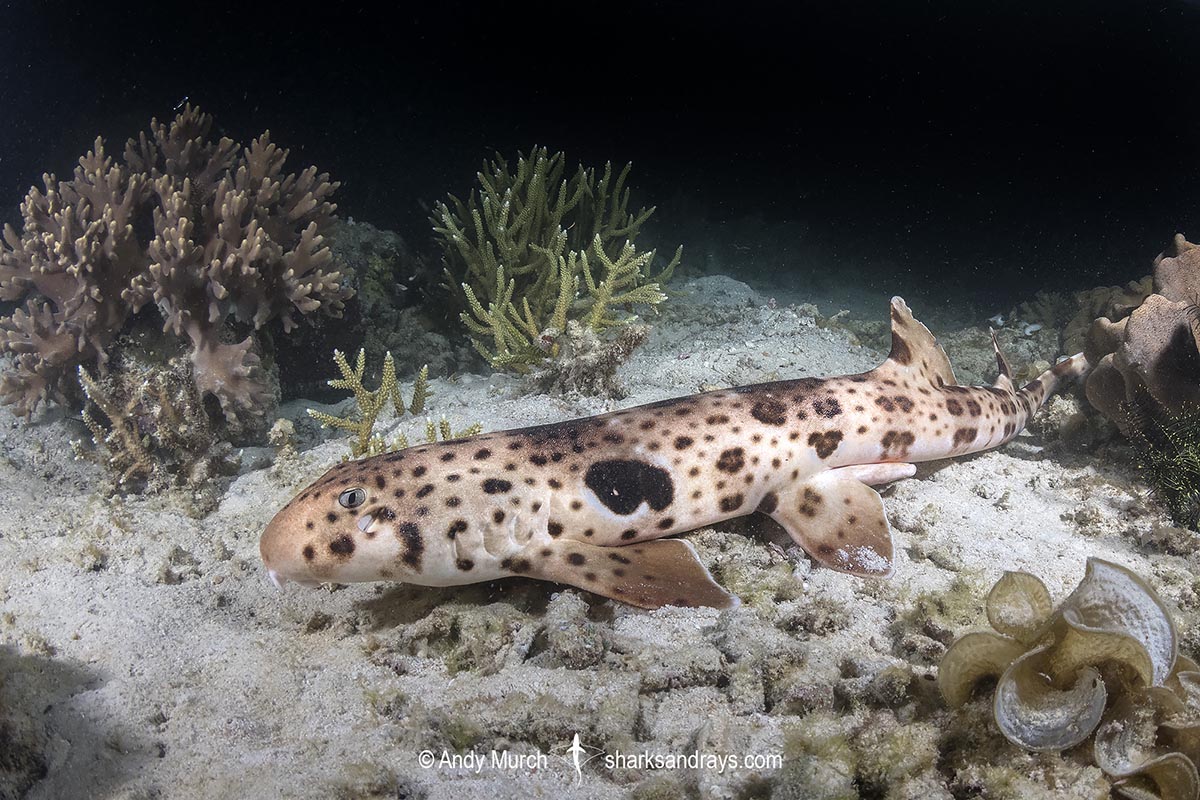Common names
Speckled Carpetshark, Speckled Epaulette Shark.
Binomial
Hemiscyllium trispeculare.
Synonyms
Chiloscyllium trispeculare.
Identification
Elongated, slender body. Well developed pectoral and pelvic fins on fore-body; used partially for walking. Two equally sized dorsal fins on rear-body. Anal fin at base of caudal fin; separated by a notch. Caudal fin long and thin with a small sub-terminal notch. Caudal lobes rounded.
Dorsal coloration light brown with many small, irregular, dark spots. Dark spots form bands or saddles along entire length of body. Large ocelli ringed in white above pectoral fins. Two or three large black spots form a black crescent behind the ocelli.
Size
Maximum confirmed length 79cm.
Habitat
Shallow tropical coral reefs and tide pools. From intertidal zone to 20m.
Distribution
Endemic to Northern Australia, from Exmouth to northern Queensland. Possibly also north into Southern Indonesia. Old reports of speckled carpetsharks from Raja Ampat probably refer to the recently described Raja Ampat epaulette shark.

Conservation Status
LEAST CONCERN
Within Australia, bycatch is probably quite low due to Hemiscyllium trispeculare’s preference for shallow coral environments.
The status of the speckled epaulette shark in Indonesia is unknown but it is likely affected by fishing and habitat loss due to the destructive practice of dynamite fishing.
Reproduction
Oviparous. Reproductive cycle poorly known.
Diet
Unknown. Probably benthic invertebrates.
Behavior
Nocturnal. Hides by day under corals venturing out at sunset to feed. Swims or ‘walks’ along on its flexible pectoral and pelvic fins. Wriggles through gaps in coral in search of prey or to seek protection.
Reaction to divers
Quite shy. Retreats into cover if approached closely.
Diving logistics
Although the speckled carpetshark is found along the entire north side of Australia, the water clarity in the far north of WA, the Northern Territory, and the northern coast of Queensland is notoriously bad due to siltation from numerous large rivers. The north coast of Australia is also a rather dangerous place to go looking for sharks because it is inhabited by extremely large and potentially deadly saltwater crocodiles.
I caught a fleeting glimpse (and got my only image) of this species while snorkeling at Bandiggi Beach on the protected side of the Exmouth peninsula in Western Australia. This seems like the safest spot to look for this shark because the viz (although not great) is still manageable.
Likely, the beaches around Broome are also worth a try although the area is swept by extremely strong tides. Any further north than Broome would probably be too logistically challenging.
What’s new
View our full list of updates
Similar species
Raja Ampat Epaulette Shark Records of H. trispeculare from Raja Ampat are likely misidentifications. The Raja Ampat epaulette shark can be distinguished by its occeli which are large, oval and ringed in white on their underside, with two smaller, joined, dark blotches that collectively form a ‘figure 8’ shape just posterior of and below the ocelli.

